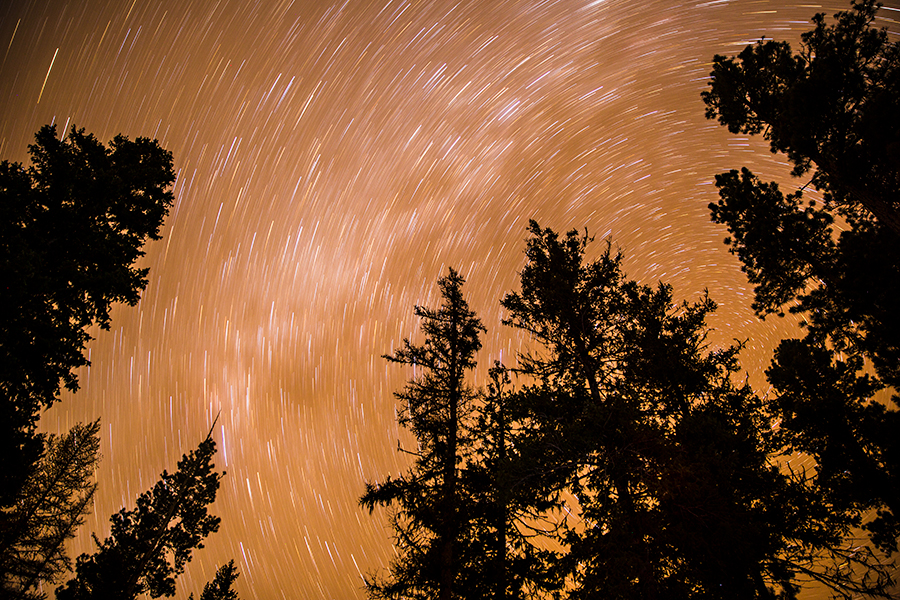Lost Trail Wildlife Refuge Designated as Dark Sky Sanctuary
U.S. Fish and Wildlife Service refuge west of Kalispell receives full certification through International Dark-Sky Association
By Tristan Scott
Experts report that 80% of the United States’ population resides in a geographic location from which it cannot experience a truly dark-as-night sky. Meanwhile, just one-third of humanity can look up and clearly see the Milky Way, which for scores of global citizens remains obscured by urban light pollution that shrouds the globe.
Those illuminating statistics are according to the International Dark Sky Association (IDA), the organization in charge of curating the planet’s short list of dark-sky sanctuaries. Fortunately for enthusiasts of pitch-black expanses that glitter with starlight, however, northwest Montana is well represented on the bill.
This week, the IDA awarded the Lost Trail National Wildlife Refuge west of Kalispell with an International Dark Sky Sanctuary certification, recognizing the 9,225-acre refuge in northwest Montana for its “exceptional quality of starry nights and nocturnal environment that is protected for its scientific, natural, and educational value, along with its cultural heritage and public enjoyment,” according to a news release.
The IDA announced the designation Oct. 31 in conjunction with the U.S. Fish and Wildlife Service (FWS) that manages the refuge, which joins Waterton-Glacier International Peace Park on the growing list of geographic locations recognized for their steps to reduce artificial light.
“As an International Dark Sky Sanctuary, Lost Trail National Wildlife Refuge provides a unique and special opportunity for visitors to experience a pristine, dark, and quiet environment with minimal influences from humankind,” according to Ashley Wilson, IDA’s director of conservation. “Refuge staff, volunteers and partners have all worked tirelessly to invest in actions that will maintain the sense of remote wilderness and unspoiled dark and majestic night skies for all who come to venture into this lush and beautiful landscape.”
Established in 1999, Lost Trail National Wildlife Refuge conserves a variety of critical habitats, including wetlands for waterfowl and other waterbirds; riparian corridors for songbirds and moose; winter grasslands for large mammals, such as deer and elk; and forests for birds of prey and apex predators, including bears and wolves.
At least half of all animal species found on the refuge can be considered nocturnal, including 13 species of bats, eight species of owls, most amphibian and reptile species and hundreds of insect species, according to FWS officials. For those “active at night” species, naturally dark skies play a crucial role in their health and survival, wildlife officials say.
“By protecting night skies from the glare of artificial lights, Lost Trail National Wildlife Refuge maintains the natural cycle of light and dark for native wildlife and plants,” according to a news release.
The refuge also offers visitors recreational opportunities, including wildlife viewing, photography, hiking and hunting. In conjunction with its new International Dark Sky Sanctuary status, wildlife managers say the refuge is eager to offer more recreational opportunities for the public.
The Big Sky Astronomy Club, for example, a group of dedicated amateur astronomers in Montana’s Flathead Valley, has committed to hosting at least one public outreach event each summer at the refuge’s visitor center. Each event will include a night sky presentation where club members set up their telescopes to observe planets, star clusters, and nebulae. Public maps of sky viewing opportunities at the refuge are also being designed and will be available on the refuge’s website to facilitate visitors’ night sky viewing opportunities.
Over the last three years, the refuge has achieved the International Dark Sky Sanctuary status from IDA by completing actions that pertain to dark sky conservation. These actions include surveying natural darkness using a sky quality meter (SQM), mapping night sky viewing opportunities and surveying and replacing all lights that were not dark-sky friendly. The refuge now has a Dark Sky Plan in place to guarantee no additional lighting will pollute its protected landscape. Any newly installed lighting will only be approved for safety reasons in developed areas, and these lights will utilize dark-sky friendly practices.
Prompted to pursue dark sky conservation measures during her nighttime work of owl surveys and toad research, project lead and FWS wildlife biologist Beverly Skinner reflected, “I have always taken the time to look up and I am never disappointed.”
According to its website, the International Dark Sky Places Program was founded in 2001 as a non-regulatory and voluntary program to encourage communities, parks, and protected areas around the world to preserve and protect dark sites through effective lighting policies, environmentally responsible outdoor lighting, and public education. When used indiscriminately, artificial light can disrupt ecosystems, impact human health, waste money and energy, contribute to climate change, and block our view and connection to the universe, the organization states.
Lost Trail National Wildlife Refuge now joins more than 200 places worldwide that have demonstrated robust community support for dark sky advocacy and strive to protect the night from light pollution. Learn more by visiting www.darksky.org/conservation/idsp.
The mission of IDA is to preserve and protect the nighttime environment and our heritage of dark skies through environmentally responsible outdoor lighting. Learn more at www.darksky.org/ and www.darksky.org/our-work/conservation/idsp/sanctuaries/lost-trail/
Plan your visit and learn more about Lost Trail National Wildlife Refuge at www.fws.gov/refuge/lost-trail.